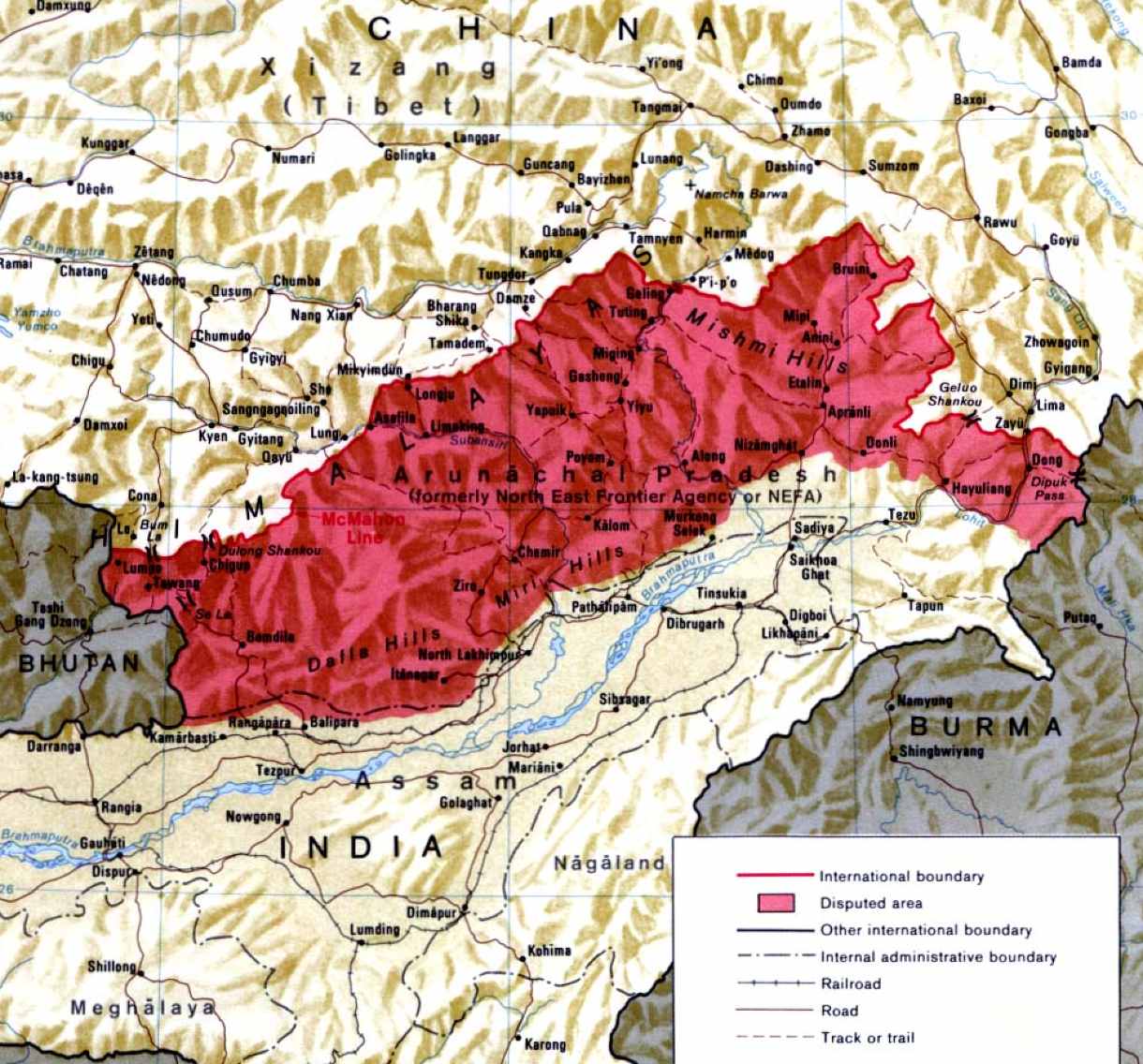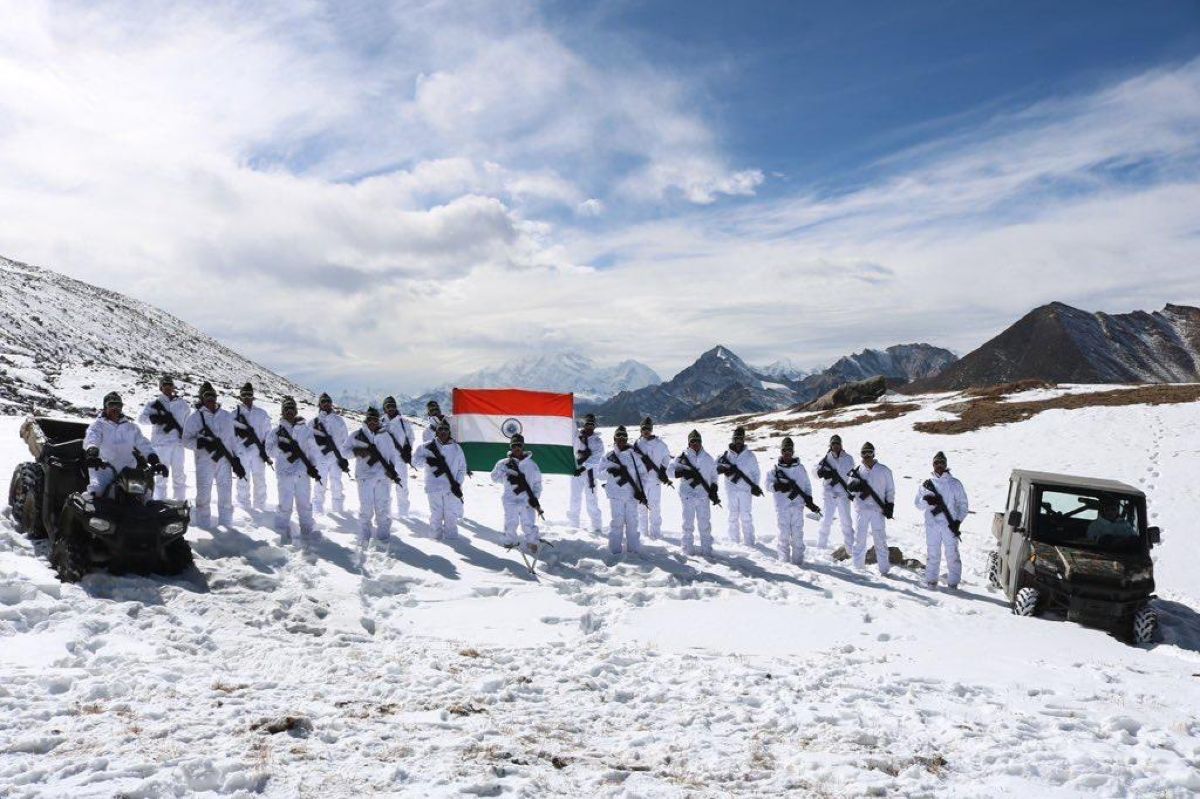China has been ratcheting up the dispute over India’s northeastern province of Arunachal Pradesh. Beijing’s audacity in asserting its claim over the Indian state has evoked a strong reaction from the US, which said it “strongly deplored” China’s unilateral territorial claims across the Line of Actual Control (LAC).
Chinese JF-17 “Shot Down” By 2nd-Hand F-16 Fighter Jet; US Establishes ‘Air Supremacy’ In Argentina
But the strongest retort to China’s attempt at ‘salami-slicing’ Arunachal Pradesh came from then-Indian Army Chief General Krishnaswamy Sundarji in 1986.
Known as Sundarji, he was one of the Indian Army’s brilliant, ambitious, and controversial chiefs. During his two years of tenure, he oversaw the Indian Peacekeeping Force’s intervention in the Sri Lankan civil war and was instrumental in conducting the biggest wargames the Indian subcontinent had ever seen, known as ‘Operation Brasstacks.’
The whisky-sipping ‘thinking general,’ as he was known, has also been credited for modernizing the Indian Army by raising a mechanized infantry regiment.
The media’s pen picture of him was: “He had the flamboyance and showmanship of a Patton, the drive and conceptual vision of a Rommel, the stubbornness and ego of a Churchill, the ambitious hawkishness of a MacArthur, and the manipulative skills of a politician. It was to prove a highly potent potion.”
But the operation that highlighted the master strategist in him was Operation Falcon in 1986-87. Buoyed by its success in the 1962 war against India, Chinese troops occupied Sumdorong Chu in the Tawang district of Arunachal Pradesh in 1986-87.

The area on the banks of Sumdorong Chu has been occupied by the Subsidiary Intelligence Bureau of India during summers and was vacated during the winters. In June 1986, an Indian patrol found that the Chinese had raised permanent structures. When confronted by the Indian troops, a reinforcement of some 200 Chinese arrived on the spot. By August, after the Chinese had constructed a helipad.
The area was located in the north of the ‘Limits of Patrolling’ laid down for Indian troops, but was claimed by the Chinese. The area was also close to the Namka Chu Valley that has been the area of a humiliating defeat for the Indian troops at the hands of the People’s Liberation Army (PLA) in 1962.
The then divisional commander of the Indian Army’s 5th Mountain Division, Major General JM ‘Jimmy’ Singh, alerted the 4 Corps Commander General NS Narahari, who personally apprised Sundarji of the unfolding situation and urged him to visit the area.
In words of military history, Air Vice Marshal Arjun Subramaniam (retired) Sundarji visited Tawang to assess the situation. Jimmy told Sundarji that Tawang could not be defended with the existing posture. There were no roads beyond Tawang except for an operational track to Bum La, which made Indian defenses weak.
“Jimmy suggested a forward posture in the Zimithang sector, Sundarji responded, ‘Who is stopping you? Why don’t you go forward? When Jimmy suggested that he needed 1,200 mules to maintain his troops and that it would take several months to build up positions, Sundarji interjected, ‘Why are we talking about mules in this era? Let’s talk about helicopters.’”
This set the foundation of a finely executed mountain operation called Operation Falcon. Instead of meekly submitting to Chinese aggression, General Sundarji started a power play.
He was aided by the then Indian Air Force Chief, Air Chief Marshal Denis La Fontaine, who put the newly acquired Russian Mi-17 medium-lift helicopters, along with the older Mi-8s, at his disposal. The newly inducted Mi-26s were also put to task.
A brigade was airlifted to the Zimithang sector, and helipads were constructed. Dropping zones were constructed to sustain the troops. Artillery guns, mortars, and ammunition stocks were airlifted.
The newly-acquired 155 mm Bofors medium regiment was Heli-lifted.
The Flight Of The Falcon
While the Indian political leadership was cowering under Chinese aggression, General Sundarji was scripting a strategy of “proactive deterrence.” This strategy required the deployment of an adequate number of troops and firepower to deter China from executing its threats. The deployment was accompanied by a swift build-up of logistics to ensure their troops were not cut off.
Operation Falcon began on October 8, 1986, with an Indian Army’s infantry battalion occupying Lungro La. The Indian Army started aggressive patrolling. The army’s aggressive posturing was met with skepticism from the China Study Group, supported by the Indian Ministry of External Affairs (MEA).

While the MEA was pushing for talks with the Chinese, the PLA made a final attempt in November 1986 to occupy an “unnamed rocky feature” overseeing Lungro La.
“A young Indian officer with a platoon pre-empted the Chinese with a daring display of rock climbing and occupied this feature. Thereafter, the Chinese remained pinned to the bottom of the Sumdorong Chu Valley,” AVM Subramaniam says in his book ‘Full Spectrum – India’s Wars (1972-2020).’
The Indian Army moved another battalion to occupy the Hathung La Ridge overlooking the Namka Chu Valley, where its posts were destroyed in 1962. Another infantry battalion blocked the southern approaches. Helipads of corrugated galvanized iron sheets were constructed within a day. The Mi-17s moved the dismantled artillery guns, mortars, and ammunition stocks.
Another battalion asked to occupy the western approaches to Tawang. The difficult operation was carried out in November at the onset of winter to occupy features Point 4811 and Point 4907 at about 16,000 feet.
The Indian Army sought help from the Rimpoche (chief priest) of the Tawang Monastery to persuade every family in Tawang to send three members to help in building the maintenance lifeline. The sturdy Monpas (local inhabitants) carried loads for over a month to Point 4907, braving the harsh winters and treacherous terrain.
“They lived and worked on faith, refusing Jimmy’s offer of high-altitude clothing and snow boots as they felt it would deprive fighting troops of their protective gear. They were the unsung heroes of Operation Falcon and had to be persuaded by Jimmy to accept payments for their services once the crisis blew over,” writes AVM Subramaniam.
The Chinese were caught off guard by India’s response and reacted with their counter-build-up. The Chinese threatened a repeat of 1962, and the West predicted war in the Himalayas.
The then prime minister Rajiv Gandhi’s advisers called Sundarji reckless. But the general stood firm, at one point telling a senior Rajiv aide, ‘Please make alternate arrangements if you think you are not getting adequate professional advice.’
The Chinese backed off as by the Spring of 1987, the Indian forces were well-entrenched in their positions. The Indian troops were on higher ground and looking down upon China.
IAF’s Role In Operation Falcon
Air Chief Marshal Fali Homi Major (retired), the only helicopter pilot to become IAF’s Chief, recollects how the force-maintained detachment in Tawang supported Operation Falcon.
“Each pilot in the unit used to average 100 hours a month during the initial months. The good part was that my pilots were battle-inoculated in almost war-like operations on a new type immediately after induction,” he said in the book.
The India-China disputed boundary, also known as the 3,488 km LAC (China claims it to be around 2,000 km long), has largely been peaceful since the 1962 war. However, since the Doklam confrontation between the two countries in 2017, the border has been simmering, and relations between the two countries have been strained.
India has been alarmed by China’s unilateral attempts to change the status quo along the disputed boundary.
The Indian forces would take a leaf out of Operation Falcon 33 years later as Chinese aggression turned violent in Galwan, leaving 20 Indian soldiers dead. The PLA build-up on the Chinese side has been large. Galwan has been one of the trigger points of the 1962 war between India and China. In 2020, troops remained entrenched on their respective sides. The Chinese had pitched over 80 tents on their Chinese side.
The Indian Armed Forces did not waste time and swung into action. Its entire transport fleet, including the C-130s and C-17s, was deployed. They airlifted 68,000 troops, 330 infantry vehicles, and over 90 tanks and artillery guns, outwitting China.
In the words of ‘Jimmy’ who later became Lieutenant General, summarised the operation as: “Operation Falcon was to occupy a forward position in the Tawang Sector to prevent intrusion, improve defensive positions and assert our claim on the McMahon Line. It increased the risk of a war with China.”
- Ritu Sharma has been a journalist for over a decade, writing on defense, foreign affairs, and nuclear technology.
- The author can be reached at ritu.sharma (at) mail.com
- Follow EurAsian Times on Google News




